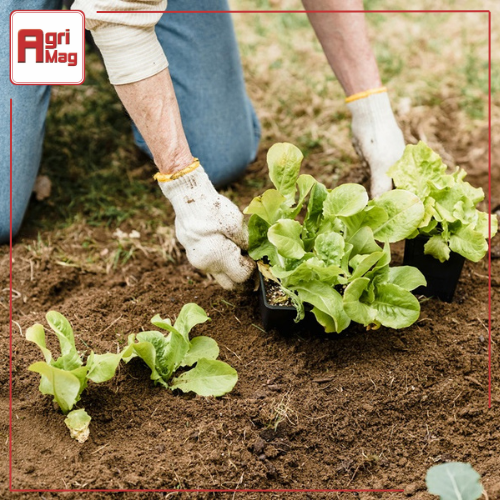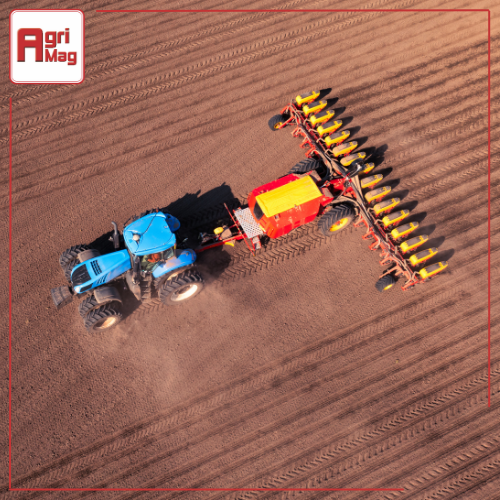
Benefits of Regenerative Agriculture for Soil Health and Crop Yields
Date: 05/02/2024
Do you know the benefits of regenerative agriculture not only improve the health of the soil but also significantly boost crop yields? As concerns about environmental sustainability and food security continue to grow, more farmers and agricultural experts are turning towards regenerative practices. This approach to farming involves techniques that restore the vitality of the earth, leading to more resilient ecosystems and improved agricultural outputs. Want to grow your farm with affordable equipment? Search through AgriMag for a wide range of farm equipment.
 Photo by Binyamin Mellish on Pexels
Photo by Binyamin Mellish on Pexels
Benefits for Soil Health
1. Enhanced Soil Structure and Fertility
Regenerative agriculture practices increase organic matter in the soil, leading to improved soil structure. This improvement allows the soil to retain more water and nutrients, which are essential for plant growth. Organic matter also feeds soil microorganisms, whose activities help in the formation of nutrient-rich humus, a key component for fertile soil.
2. Increased Biodiversity in the Soil
By using cover crops and reducing chemical inputs, regenerative agriculture supports a wider range of soil life, including beneficial bacteria, fungi, and insects. These organisms play critical roles in nutrient cycling, pest control, and maintaining overall soil health, which can deter diseases and enhance crop resilience.
3. Reduced Erosion and Water Loss
Practices such as no-till farming and cover cropping significantly reduce soil erosion and water runoff. Healthier soil with better structure holds water more efficiently, reducing the need for frequent irrigation and protecting waterways from sediment and nutrient runoff.
Benefits for Crop Yields
1. Resilience to Climate Variability
Regenerative agriculture makes farms more resilient against droughts and heavy rains. Improved soil structure allows the soil to absorb and retain water during dry periods, while also providing better drainage during wet conditions. This resilience can lead to more consistent crop yields even in variable weather conditions.
2. Improved Plant Health and Growth
Soils rich in organic matter and microbial life support stronger plant growth. Plants grown in such soils are generally healthier and more robust, capable of resisting pests and diseases better than those grown in depleted soils. This leads to higher yields and better-quality crops.
3. Long-term Sustainability of Crop Production
Unlike conventional agriculture, which often depletes soil nutrients and leads to degradation, regenerative practices build up soil health over time. This sustainable approach ensures that soil remains productive for future generations, providing long-term benefits for crop yield and food security.

Economic and Environmental Benefits
Regenerative agriculture not only improves soil health and crop yields but also offers broader economic and environmental benefits:
- Reduced Dependence on Chemical Inputs: Healthy, resilient soils reduce the need for synthetic fertilisers and pesticides, cutting costs and minimising environmental pollution.
- Carbon Sequestration: By enhancing soil organic matter, regenerative agriculture practices can capture atmospheric carbon dioxide and store it in the soil, contributing to climate change mitigation.
- Enhanced Farmer Wellbeing: Regenerative farming can increase profitability and reduce risk, leading to better economic stability for farmers.
Challenges and Steps Forward in Regenerative Agriculture
While the benefits of regenerative agriculture are substantial, transitioning from conventional to regenerative farming practices poses its own set of challenges. Awareness, education, and initial investment are significant barriers. However, overcoming these challenges is essential for realising the full potential of regenerative practices.
Educational and Training Needs
For many farmers, shifting to regenerative agriculture requires a paradigm shift in farming practices and principles. Extensive training and education are crucial in helping farmers understand the ecological and economic advantages of regenerative agriculture. Initiatives like workshops, demonstration farms, and agricultural extension services can play pivotal roles in this educational outreach.
Initial Investment and Economic Risks
Transitioning to regenerative agriculture often involves upfront costs and risks. For example, purchasing new equipment for no-till farming or establishing cover crops can be costly. Moreover, the benefits, while significant, may take several seasons to materialise, posing financial risks in the short term. Financial incentives such as grants, subsidies, or carbon credits can help mitigate these risks and support farmers during the transition phase.
Policy Support and Market Demand
Governments and policymakers can accelerate the adoption of regenerative practices through supportive policies and regulations. This includes providing direct subsidies, facilitating market access for regeneratively grown products, and setting agricultural standards that promote soil health and biodiversity. Additionally, increasing consumer awareness about the benefits of regenerative agriculture can drive market demand and support higher pricing for regeneratively grown products.
Global Impact and the Future
The potential global impact of widespread adoption of regenerative agriculture is profound. By restoring soil health and ecosystem balance, regenerative practices can help address many pressing global challenges, including climate change, biodiversity loss, and food insecurity.
As the world continues to face environmental degradation and resource scarcity, regenerative agriculture offers a hopeful and practical solution. Its holistic approach not only addresses soil health and crop yields but also encompasses water conservation, carbon sequestration, and sustainability. This makes it an invaluable practice in the global movement towards environmental stewardship and sustainable development.
In summary, the benefits of regenerative agriculture are vast and vital for the future of both farming and our global environment. By improving soil health and enhancing crop yields, this approach offers a path towards sustainable and productive agriculture that can feed the world without depleting its resources. As more farmers adopt these practices, we can look forward to a healthier planet and a more secure food supply for generations to come. Embracing regenerative agriculture is not just a choice but a necessity for sustainability and resilience in our changing world. Want to expand your farm with reasonably priced machinery? AgriMag offers a large selection of farm equipment.
Categories:
Common category
Category Search:
Latest articles:

Factors to Consider When Choosing Planting and Seeding Equipment

NAMPO 2024 Embraces Connectivity for Sustainable Growth

Tillage Equipment on AgriMag: Empowering Small Farms


